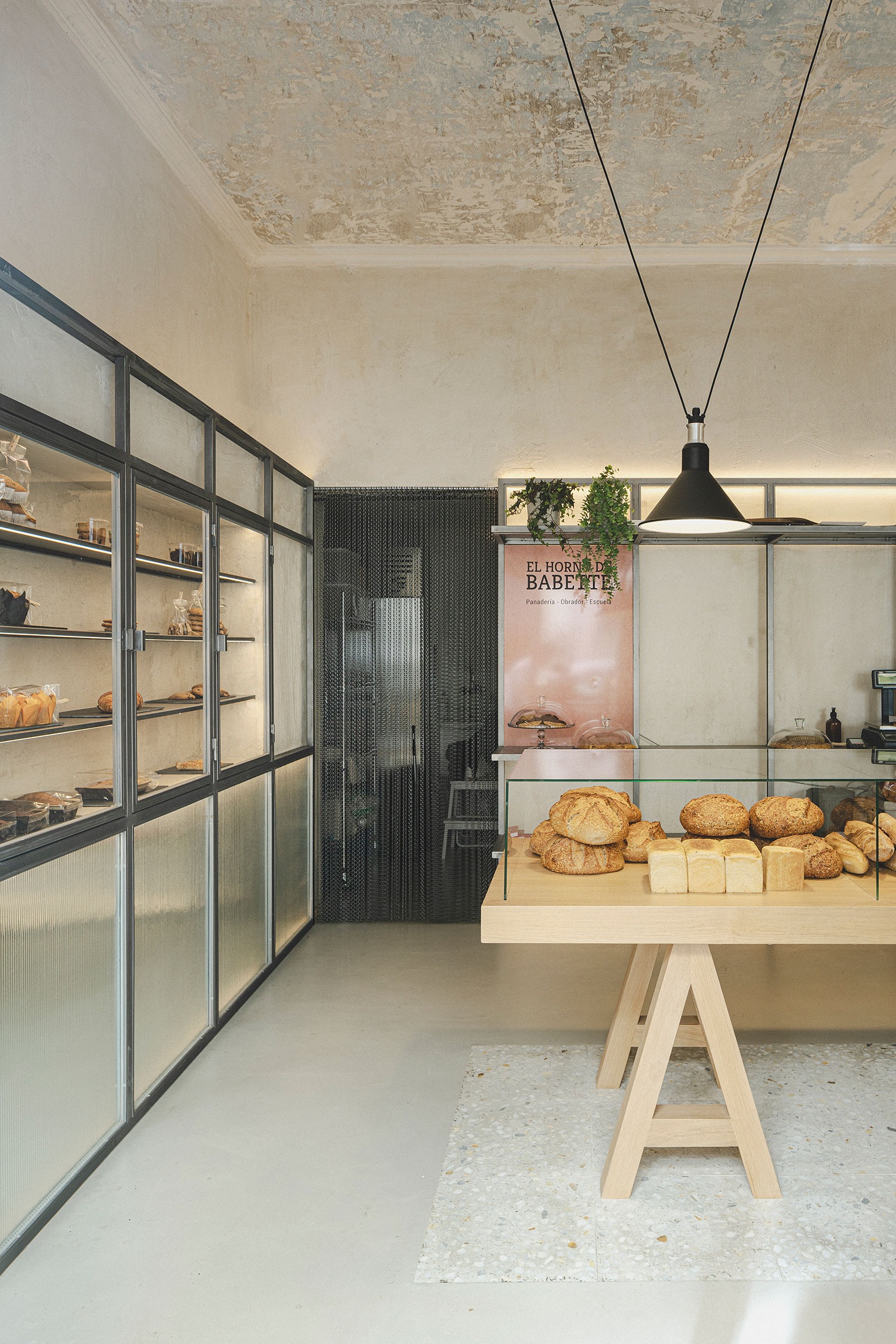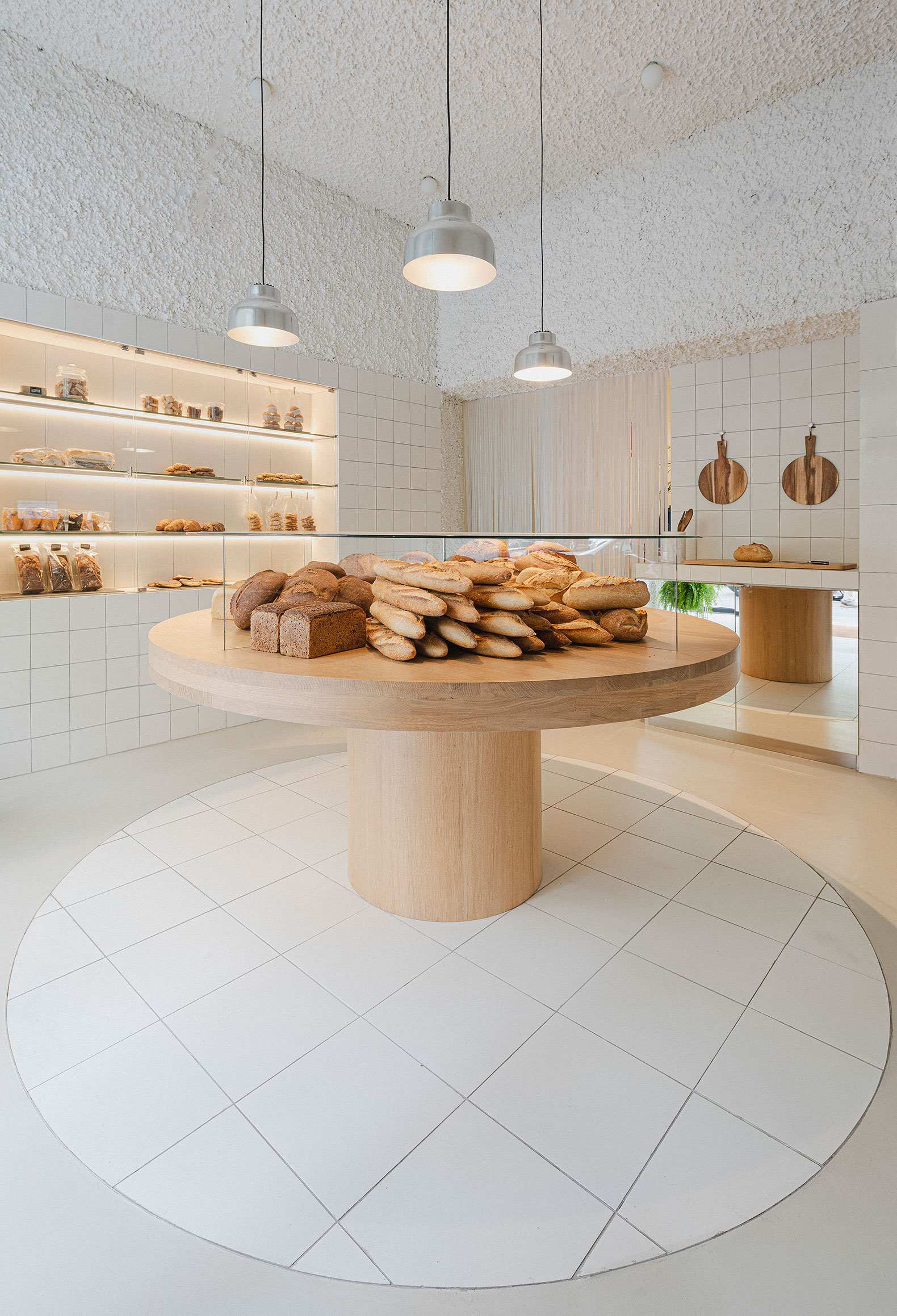
For “El Horno de Babette”, Zooco Estudio has created a common layout for the three different establishments in Madrid, which, under the premise of maintaining the table as the central element and with the idea of blurring the boundary between public and private, alternate a series of delicate and careful materials and finishes that, accompanied by a sensitive furniture and lighting design, create a welcoming and warm atmosphere in all.
The three establishments are based on the same initial approach that ends up giving rise to three different results, since each one focuses on giving prominence to a different but interrelated concept, such as the dining room, the workshop or the kitchen. While one seeks to create a circular space where ceramic materials stand out, another accentuates its industrial character through metal screens that serve both as an exhibition and work space, or where a more domestic character is created through a greater presence of textiles and wood.

"El horno de Babette" by Zooco Estudio. Photograph by David Zarzoso.
Project description by Zooco Estudio
Babette's oven around the table
It is proposed the rupture of the traditional bakery scheme, very hierarchical and divided by an exhibitor that clearly defines the public space versus the private one. Taking the dining room plan as reference, with the central table as the protagonist, we blur this boundary to enhance the costumer experience, which is not just a matter of looking and ordering, but also includes a tour of the store for a better understanding of the product on display. This new concept, will be accompanied from the material point of view by woods, textiles and glass, and focal and warm lighting, in order to reinforce the feeling of a place with a more domestic character, away from the characteristic of retail.
Babette's store in general Díaz Porlier 34, Central scheme for a dining room
In Babette’s store at General Díaz Porlier 34 street, the central scheme is interpreted as a dining room, where everything is centred around a solid oak table, where the different types of breads are exposed.
From the material point of view, we opted for woods, textiles and glass, and focal and warm lighting, in order to reinforce the feeling of a place with a more domestic character, away from the characteristic of retail.

Babette's store in Orellana 16, Central Scheme for a Workroom
In Babette’s store at Orellana 16 street, the space of a bakery workroom is taken as reference. In the centre, the wooden table for the display of bread appears again, while the walls are designed with metal screens that incorporate the other exhibition and work surfaces of the bakery. As for the materials, the finishes are reminiscent of the industrial: metal profiles, microcement, terrazzo and glass, but without leaving aside the wood, as a common point in all bakeries. Finally, the warm lighting softens the industrial character and gives the store a cosy atmosphere.
Babette's store in Paseo de La Habana 52 street, Central scheme for a kitchen
In Babette’s store at Paseo de la Habana 52 street, the same concept is proposed in a space such as a kitchen. The central round wooden table rests on a carpet of ceramic tiling, the protagonist material throughout the bakery. In addition to the tiling of different sizes that cover the walls, microcement is used on the floor and sprayed cement on the upper strip of walls and ceiling. The doors of the furniture and the central leg of the table are veneered with mirror, to give a greater sense of spaciousness and luminosity to the space.
























































